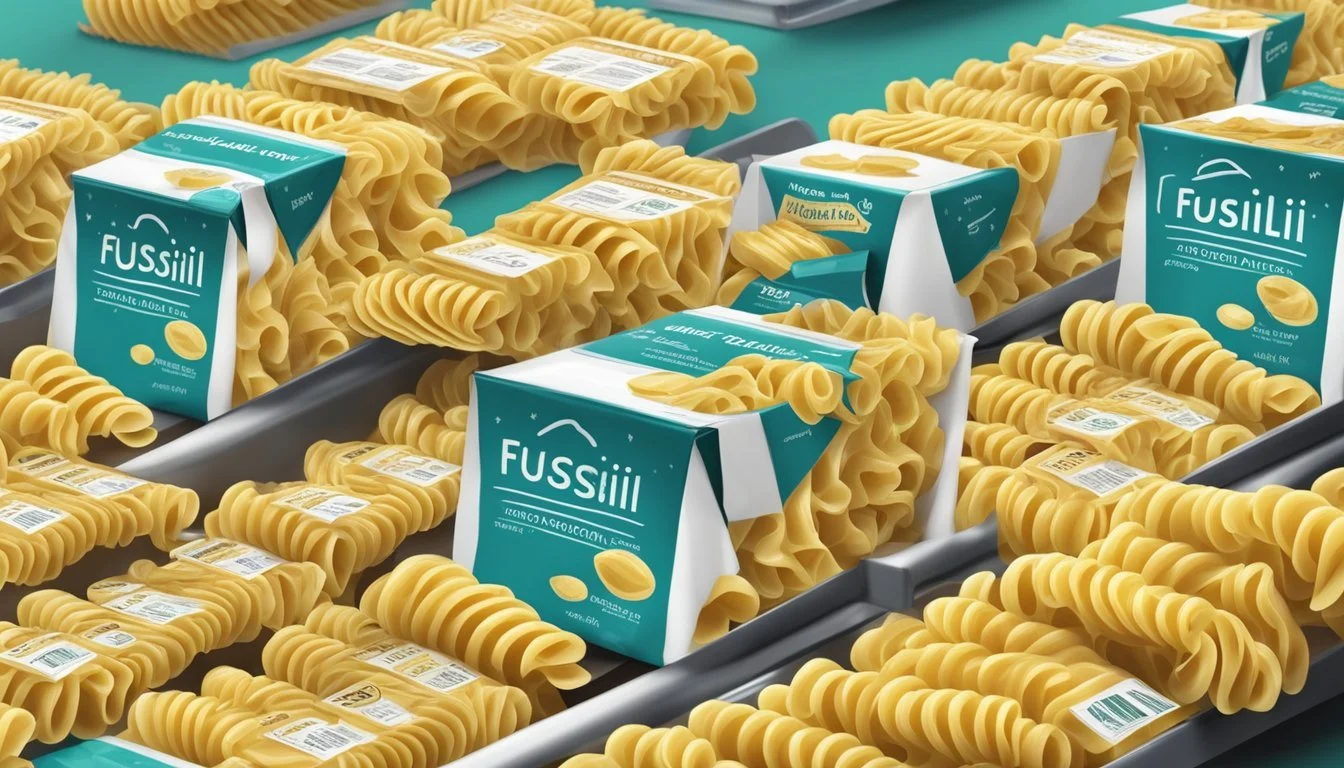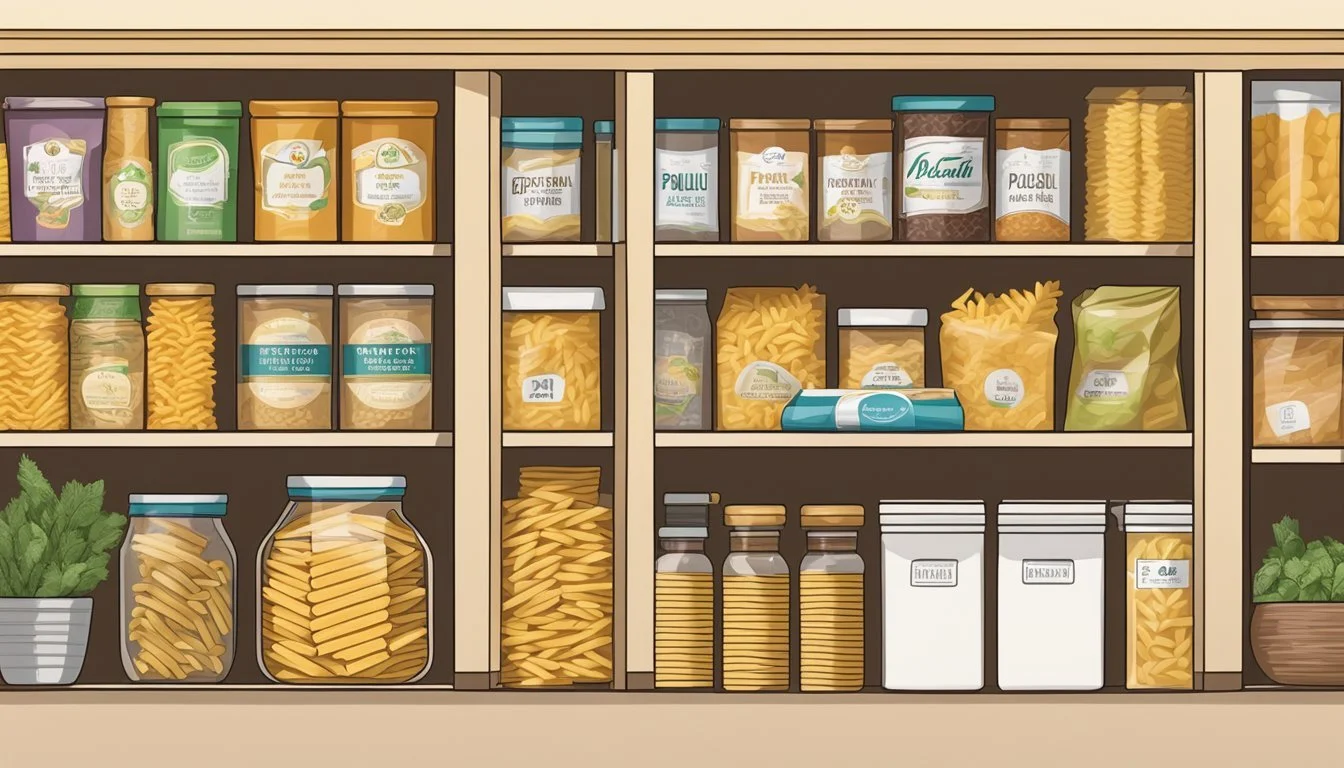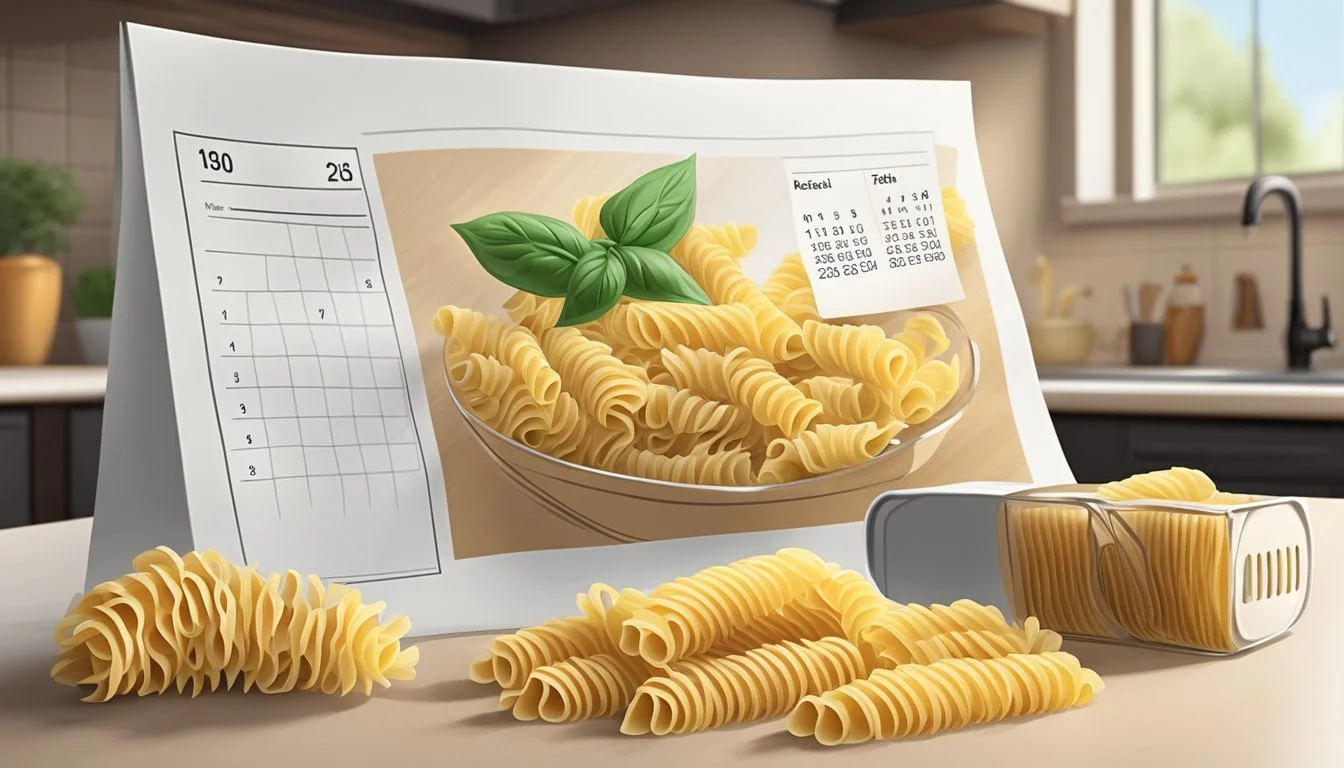How Long Does Fusilli Pasta Last?
Uncovering Shelf Life and Storage Tips
Fusilli pasta , with its delightful spirals and robust texture, is a staple in many pantries worldwide. Its versatility in various dishes makes it a favorite choice for cooks of all skill levels. The shelf life of fusilli, as with other dried pastas (What wine goes well with pasta?), generally spans a significant duration. Uncooked, dried fusilli pasta can be stored for a prolonged period, commonly lasting for 1-2 years beyond its "best by" date when kept in appropriate conditions. The longevity of fusilli is attributed to its low moisture content, which inhibits the growth of microorganisms that contribute to spoilage.
The conditions under which fusilli pasta is stored markedly affect its quality and safety. To maintain its best quality, it should be kept in a cool, dry place away from sources of heat and moisture. Sealed packaging is optimal for preventing the influx of air and humidity, which can undermine the pasta's texture and flavor. Once the packaging is opened, transferring the pasta to an airtight container can extend its usability by providing an additional buffer against external elements.
While dried fusilli boasts an impressive shelf life, fresh fusilli pasta requires more attentive care due to its higher moisture content. Fresh fusilli typically remains good for consumption for approximately 4-5 days past its "best by" date if refrigerated and for about two months if kept in the freezer. It's imperative to adhere to these storage guidelines to enjoy the pasta at its peak quality and to avoid potential food spoilage.
Understanding Pasta’s Shelf Life
When considering pasta's longevity, it's essential to distinguish between dried and fresh varieties, as they have markedly different shelf lives. The type of pasta and storage conditions significantly influence its duration of freshness.
Origins of Fusilli
Fusilli, an Italian pasta, has its roots in Calabria. Its name derives from the word "fuso," meaning spindle, due to its twisted, spiral shape that mirrors the tool used to wind yarn. Traditionally made by wrapping spaghetti around a knitting needle, fusilli is as much a craft as it is a culinary staple.
Pasta Types and Storage Variations
Pasta comes in numerous forms, ranging from conventional durum wheat to whole wheat and gluten-free versions. Dry pasta generally has a 'best by' or 'best if used by' date, indicating peak quality rather than an expiration date. Dried fusilli pasta typically lasts between 1 to 2 years when stored in a cool, dry place.
Type of Pasta Expected Shelf Life Storage Conditions Dry Fusilli 1-2 years past 'best by' date Cool, dry cupboard Fresh Fusilli 4-5 days beyond 'best by' date Refrigeration necessary
Fresh pasta (how long does fresh pasta last?), often more tender and with a shorter cooking time compared to its dried counterpart, will remain good for consumption for 4 to 5 days past its 'best by' date when kept in the refrigerator. The shelf life can extend to several months if fresh pasta is frozen.
Regardless of type, all pasta should be stored away from moisture and heat sources to preserve quality. Variations like fusilli, known also as rotini when its spirals are larger, and macaroni—another pasta with a tubular shape—are no exception to these guidelines.
Proper Storage of Fusilli Pasta
Proper storage is essential for maintaining the quality of fusilli pasta, whether it’s opened or unopened. The longevity and freshness of pasta are highly dependent on the conditions under which it's stored, including packaging, storage environments, and temperature control.
Packaging and Containers
For unopened dried fusilli, it should remain in its original packaging until ready to use; however, once opened, transferring it to an airtight container or sealing it in a vacuum-sealed bag is crucial to preserve its quality. A tightly closed container protects the pasta from moisture, air exposure, and pests.
Storage Environments
Fusilli pasta thrives in a dry area away from heat and light — a pantry at room temperature is ideal. Strive to maintain a storage temperature between 40°F (4°C) and 75°F (24°C) to ensure longevity. For long-term storage, keep the humidity levels under 40% to deter any moisture accumulation. When storing in a freezer, ensure the packaging is airtight; this freezes fusilli for up to eight months, preventing freezer burn and taste degradation. It is not necessary to store dried fusilli in the refrigerator as it does not extend its life compared to pantry storage.
Extending Fusilli Pasta’s Life
When stored properly, fusilli pasta can maintain its best quality for a considerable amount of time. Understanding the right refrigeration and freezing techniques, as well as how to shield pasta from moisture and pests, can significantly extend its shelf life while preserving its quality.
Refrigeration and Freezing Techniques
Fusilli pasta can last for a longer period when stored in the refrigerator or freezer, particularly if it has been cooked. To refrigerate cooked fusilli, one should first coat it lightly with olive oil to prevent sticking, then store it in an airtight container to keep it fresh for up to 5 days. For freezing, portion the pasta into servings, and wrap them securely in cling film or store in freezer bags. This method can extend the fusilli's life for up to 2 months while maintaining quality.
Refrigerator: up to 5 days in an airtight container.
Freezer: up to 2 months in cling film or freezer bags.
Avoidance of Moisture and Pests
Storing fusilli in a dry area is critical to preventing spoilage. The pasta should be kept in an airtight container to protect against humidity and pests like insects. A cool pantry or kitchen cabinet away from any sources of heat and water is ideal. Regular inspections for signs of moisture or pest intrusion can also help in maintaining the quality of the pasta.
Storage location: cool, dry area such as a pantry or kitchen cabinet.
Container: airtight to protect against humidity and pests.
Identifying Spoilage
When it comes to dry fusilli pasta, identifying spoilage is crucial to prevent the consumption of spoiled food, which can lead to foodborne illness. Key indicators include changes in appearance, smell, and flavor.
Visual Indicators
One should inspect the pasta for any discoloration, mold growth, or signs of pests. Spoiled pasta may present with spots that are discolored. These spots can range from white to green or black and often indicate mold. Significant clumping of the pasta is another visual clue that it has absorbed moisture and may have gone bad.
Olfactory and Taste Changes
Spoiled fusilli will often have an off smell—a musty or sour odor unlike the neutral smell of fresh, dry pasta. Tasting the pasta is not recommended due to potential health risks. However, if the pasta is inadvertently tasted, a change in flavor—such as a stale, sour, or otherwise unpleasant taste—is a clear sign of spoilage and the pasta should not be consumed.
Cooking and Usage Tips
To ensure the best quality and flavor, understanding the correct cooking methods and recipe integration for fusilli pasta is vital.
Achieving Ideal Texture
Fusilli, with its unique spiral shape, requires careful attention to texture. For al dente pasta – firm yet tender to the bite – a general guideline is to cook the fusilli in boiling salted water for approximately 8-10 minutes. It is advisable to start taste-testing the pasta a couple of minutes before the lower end of the suggested cook time. Remember that the spirals hold onto sauce well, but overcooking can turn them mushy, diminishing their ability to capture flavor.
Fusilli in Recipes
Fusilli's versatility makes it suitable for a wide array of recipes. The corkscrew noodles pair well with a rich and creamy cheese sauce due to their ability to hold onto thicker textures. For a lighter option, tossing fusilli with fresh tomatoes, aromatic garlic, and a drizzle of olive oil can be refreshingly delicious. In pasta salads, their shape helps them blend evenly with other ingredients, and they are substantial enough to support a hearty amount of vegetables and dressings. When adding fusilli to any pasta dish, blend it with the sauce while both are warm to enhance flavor absorption.
Substitutes and Variations
When it comes to replacing fusilli pasta, variety and adaptability are key. It's important to consider both common alternative pasta shapes and non-wheat options for those seeking gluten-free substitutes.
Alternative Pasta Shapes
For those looking to maintain a similar texture and visual appeal to fusilli, a range of spiral-shaped pastas can serve as excellent substitutes. They typically hold sauce well and can be used interchangeably in most recipes.
Rotini: A short, corkscrew-shaped pasta with a ridged surface, rotini is a readily available substitute that captures the essence of fusilli's spiral form.
Macaroni: While not spiral-shaped, macaroni's hollow structure makes it a practical option for dishes that require the pasta to trap sauce.
Fusilli Bucati: This variant of fusilli resembles curly spaghetti with a hollow center, offering a unique twist on the classic shape.
Fusilli Lunghi: A longer version of fusilli, fusilli lunghi brings a different dimension to dishes with its lengthy, twisty appearance.
For homemade pasta enthusiasts, creating a fusilli-like shape by hand is possible, with tools or even just careful twisting techniques to achieve the desired spiral form.
Non-Wheat Options
Those requiring a gluten-free diet or looking to explore non-wheat pasta variations have several alternatives:
Corn Pasta: Often recommended for its close texture to traditional pasta, corn pasta's natural yellow hue and spiral-shapes like fusilli make it a versatile choice.
Rice Pasta: Rice pasta provides a neutral flavor and comes in various shapes, including spiral, making it a suitable fusilli substitute.
Quinoa Pasta: A protein-rich option, quinoa pasta presents a nutritious alternative and is often available in forms similar to fusilli.
When selecting gluten-free options, it is important to cook these pastas according to package instructions as cooking times and techniques may vary from those of wheat-based pastas.





